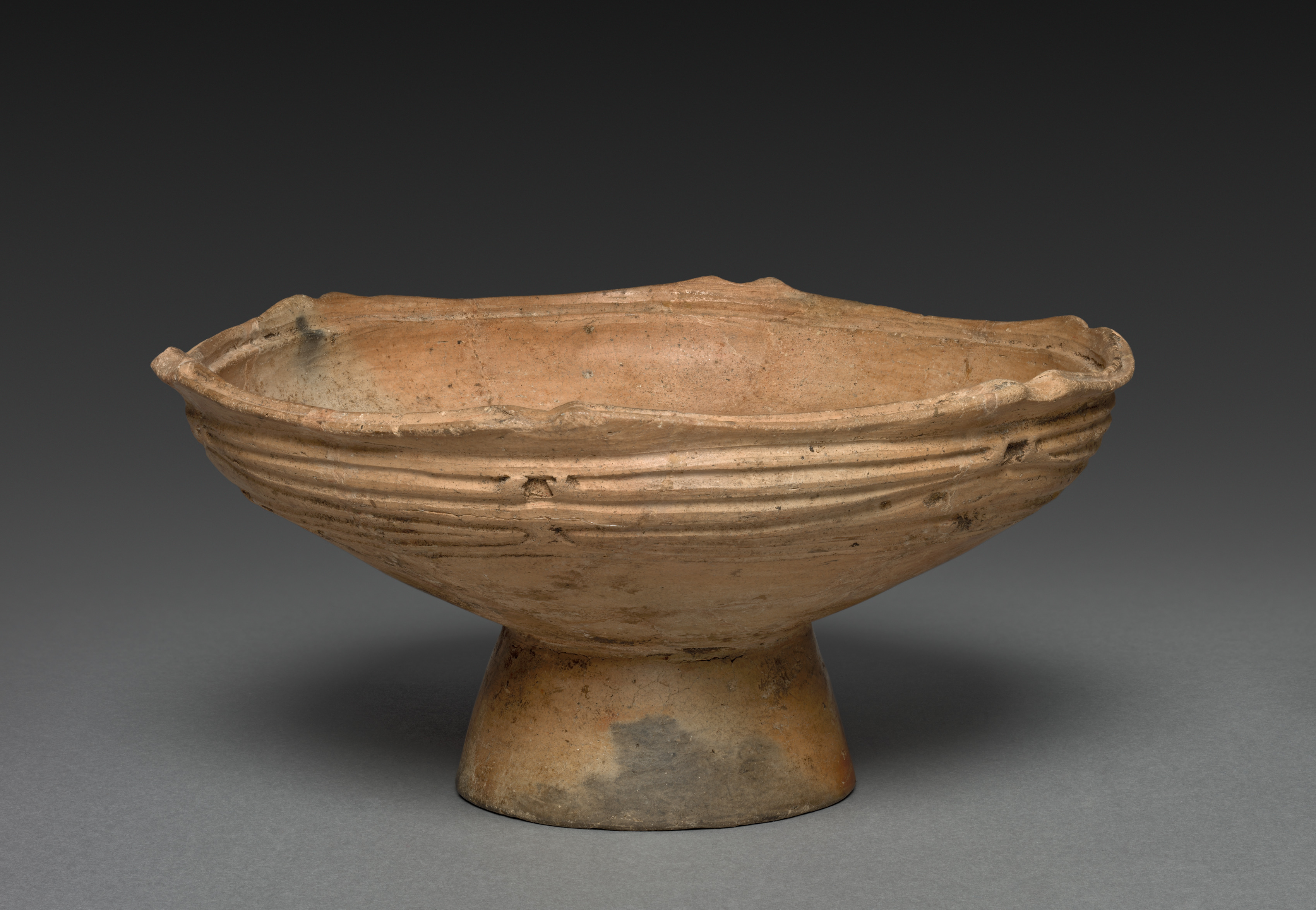The Cleveland Museum of Art
Collection Online as of April 23, 2024

Pedestalled Dish
c. 1000–500 BCE
(c. 10,500–300 BCE)
Overall: 9.5 x 19 x 5.1 cm (3 3/4 x 7 1/2 x 2 in.); Pedestal: 3.5 x 3.5 cm (1 3/8 x 1 3/8 in.)
John L. Severance Fund 2001.133
Location: not on view
Description
The Jomon period (10,500-300 BC) marks the beginning of the Japanese ceramic tradition, one of the most vibrant in world history. Major features such as an emphasis on asymmetrical silhouettes, great attention to surface texture, technological simplicity, and ambivalence to bright color already appear in this era. Late Jomon vessels are typically formed of a dense clay paste, and during this period, smaller serving vessels appear, in contrast to earlier deep storage or cooking vessel shapes. New types of surface decoration-carved rather than impressed into the clay body-herald the arrival of a distinctive aesthetic. The attachment of the pedestal to this shallow bowl, as well as the vessel's rather thin walls, also identify a new stage in ceramic production in Japan.- ?–2001(Shouun Oriental Art, Tokyo, Japan, sold to the Cleveland Museum of Art)2001–The Cleveland Museum of Art, Cleveland, OH
- {{cite web|title=Pedestalled Dish|url=false|author=|year=c. 1000–500 BCE|access-date=23 April 2024|publisher=Cleveland Museum of Art}}
Source URL:
https://www.clevelandart.org/art/2001.133